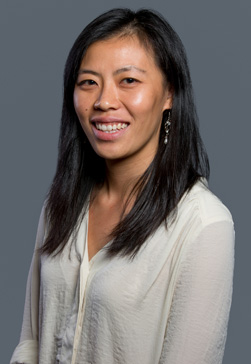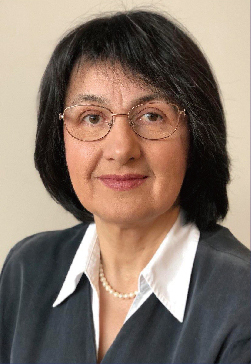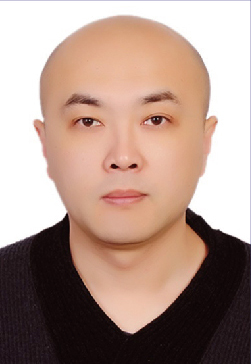Tammy Ma
Lawrence Livermore National Laboratory, U.S.A.
Theme:”On the Threshold of Laser Fusion Ignition: Recent Breakthroughs at the U.S. National Ignition Facility and the Pathway to Inertial Fusion Energy”
9:10-9:55

Tammy Ma
Lawrence Livermore National Laboratory, U.S.A.
Theme:”On the Threshold of Laser Fusion Ignition: Recent Breakthroughs at the U.S. National Ignition Facility and the Pathway to Inertial Fusion Energy”
9:10-9:55
In August 2022, a record-breaking shot with 1.3 megajoules of fusion yield was achieved on the U.S. Lawrence Livermore National Laboratory’s National Ignition Facility (NIF), the world’s largest, most energetic laser. This experimental result, decades in the making, is a significant breakthrough for laser-driven inertial fusion. This talk will review the experimental results, the photonics advancements and many more technologies that made this breakthrough possible, and the implications for future research. Furthermore, these recent game-changing results on the NIF now lay the groundwork to explore laser inertial fusion as a path for clean energy and energy security.
Dr. Tammy Ma is the Advanced Photon Technologies Program Element Leader for High-Intensity Laser High Energy Density Science at the Lawrence Livermore National Laboratory in the U.S. This group pioneers use of the highest intensity lasers in the world to investigate novel states of matter, generate energetic beams of particles, study laboratory astrophysics, and explore fusion physics. Tammy received her B.S. (2005) from Caltech, then M.S. (2008) and Ph.D. (2010) from UC San Diego. She has authored or co-authored over 180 refereed journal publications, and currently sits on the Fusion Energy Sciences Advisory Committee (FESAC), providing advice to the U.S. Department of Energy’s Office of Science on complex scientific and technological issues related to fusion energy and plasma research. She is the recipient of a Presidential Early Career Award for Science and Engineering (PECASE), a DOE Early Career Research Award, and the 2021 Excellence in Fusion Engineering Award from the Fusion Power Associates.

Irina SOROKINA
NTNU Norwegian University of Science and Technology, Norway
Theme:”Next generation mid-infrared lasers: a route towards sub-wavelength 3Dmanufacturing”
10:10-10:55
The exceedingly demanding requirements set by the modern industrial applications such as fine material processing call for controlling the light generation to its extremes. The talk reviews our recent break-throughs in development and applications of a new class of industrial grade fiber/waveguide based ultrafast mid-IR lasers and frequency combs. The finely tunable operation of femto- and picosecond lasers between 2.1 microns and 3 microns, with down to few optical cycle pulse durations and up to multi-mJ pulse energies provide a new dimension, for the first time enabling single-shot sub-wavelength and sub-surface micro-processing of semiconductors with industrially relevant processing speeds.
These break-throughs in fine processing of semiconductors became possible not only due to the advancements in mid-IR ultrafast laser technology, but due to a deeper understanding and careful analysis of the nonlinear optical phenomena in its complexity. The developed theory applicable to sub-surface processing of any semiconductor material not only allowed finding an optimum laser wavelength as well as optimum set of laser parameters, enabling for the first time sub-surface 3D structuring and stealth dicing of silicon with sub-wavelength spatial resolution. It laid the foundations for the next generation industrial laser processing tools acting like a 3D printer, freely setting the point modifications at different depths pulse by pulse, potentially at up to MHz repetition rates.
Irina T. Sorokina is a Professor of Physics (Optics and Laser Physics) at the Norwegian University of Science and Technology, and a co-founder and president of ATLA Lasers AS – a company producing industrial grade ultrafast tunable fiber-based lasers operating above 2 μm. Her over 30 years of research resulted in development and commercialization of the first femtosecond Cr2+:ZnSe laser (“Ti-sapphire of the infrared”). In 2004 she received the IEE Snell Premium award for her contributions to the development of broadly tunable and micro- chip Cr:ZnS lasers and their applications. Sorokina is a Fellow of the Optical Society (OSA) and an Elected Member of the Norwegian Academy of Science and Letters. She is an author of >300 scientific publications, editor of 3 books, 4 patents and several book chapters in the field of laser technology and applications.

Wentao Wang
State Key Laboratory of High Field Laser Physics and CAS Center for Excellence in Ultra-intense Laser Science, Shanghai Institute of Optics and Fine Mechanics (SIOM), China
Theme:”Free-electron lasing at 27 nm based on a laser wakefield accelerator at SIOM”
11:10-11:55
X-ray free-electron lasers can generate intense and coherent radiation at wavelengths down to the sub-ångström region, and have become indispensable tools for applications in structural biology and chemistry, among other disciplines. Several X-ray free-electron laser facilities are in operation; however, their requirement for large, high-cost, state-of-the-art radio-frequency accelerators has led to great interest in the development of compact and economical accelerators. Laser wakefield accelerators can sustain accelerating gradients more than three orders of magnitude higher than those of radio-frequency accelerators, and are regarded as an attractive option for driving compact X-ray free-electron lasers. However, the realization of such devices remains a challenge owing to the relatively poor quality of electron beams that are based on a laser wakefield accelerator. After ten years of efforts, Prof. Ruxin Li’s research team present an experimental demonstration of undulator radiation amplification in the exponential-gain regime by using electron beams based on a laser wakefield accelerator. The amplified undulator radiation, which is typically centred at 27 nanometres and has a maximum photon number of around 1010 per shot, yields a maximum radiation energy of about 150 nanojoules. The results constitute a proof-of-principle demonstration of free-electron lasing using a laser wakefield accelerator, and pave the way towards the development of compact Xray free-electron lasers based on this technology with broad applications. In future, a laboratoryscale, ultra-brilliant FEL (around 10 m in size), with the advantages of low cost (~ US$5 million), high temporal resolution (femtosecond-level), high resolution (nanometre-level), and ultra-high precision timing control (less than 1 fs), could gain popularity.
Wentao Wang is a professor of Shanghai Institute of Optics and Machinery, Chinese Academy of Sciences. His research interests include laser wakefield electron accelerator and compact radiation sources, with a preference for experimental physics. He and his colleagues have published more than 50 papers in Nature, Physical Review Letters and others. He was awarded “2016 China Optical Important Achievement Award”, “2019 Excellent Member of Youth Innovation Promotion Association, Cas” and other honors.